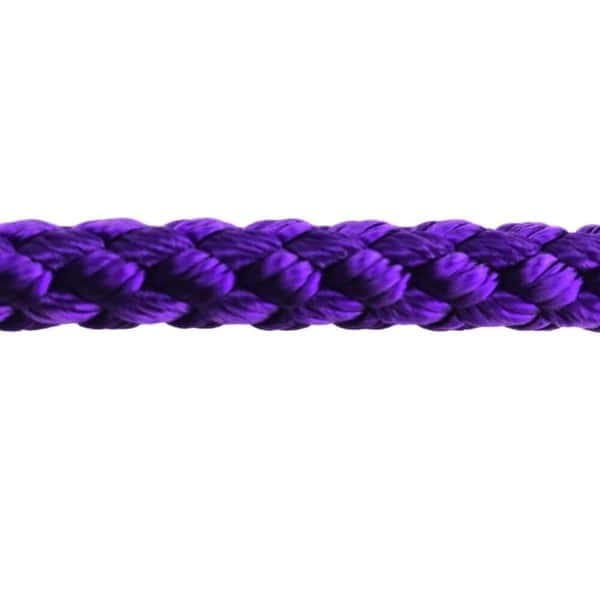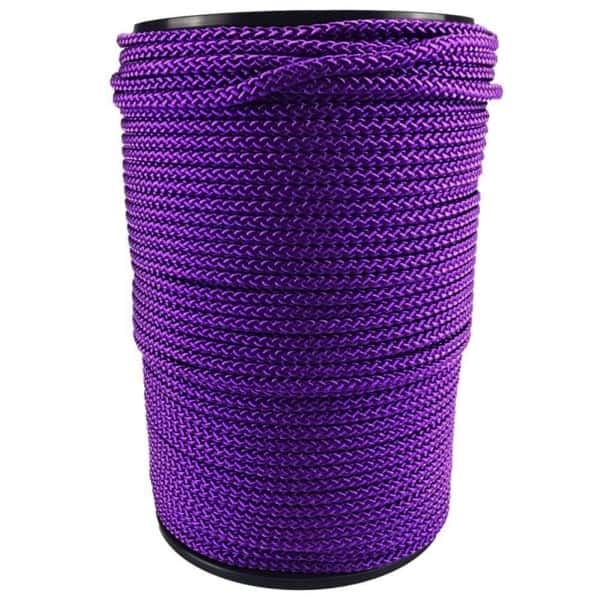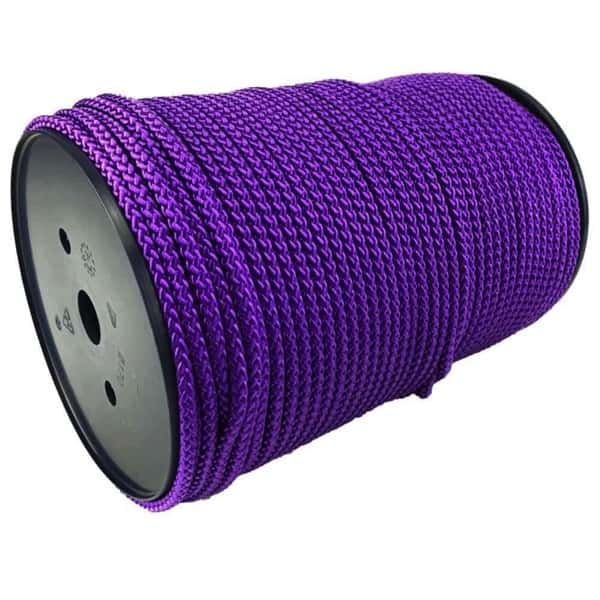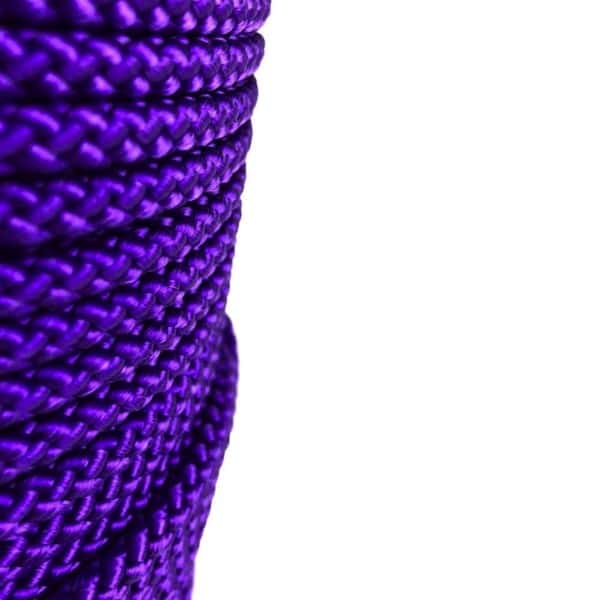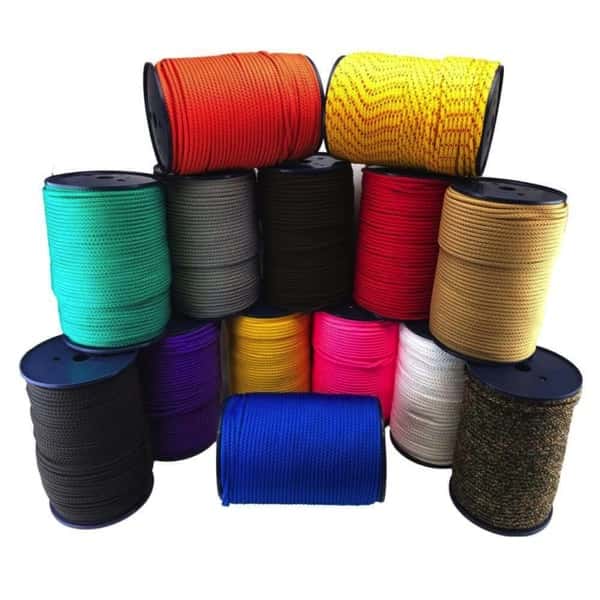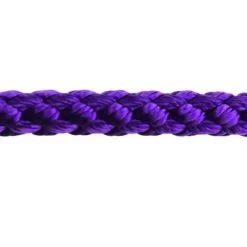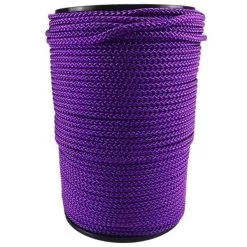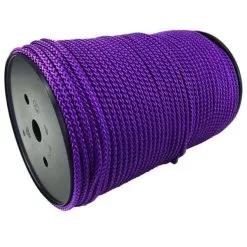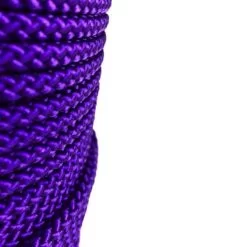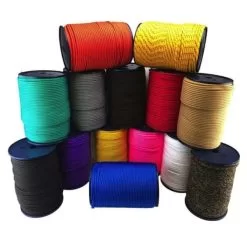4mm Purple Braided Polypropylene Rope (By The Metre)
- Rope Type – Braided Polypropylene Rope
- Colour – Purple
- Diameter – 4mm
- Order – By The Metre
- Both Ends Will Be Heat Sealed To Prevent Fraying
- Maximum Continuous Length – 200 Metres
- More Information About Braided Polypropylene Rope Below
Use the quantity box to indicate how many meters you need. For example, if you require 15 meters, input ’15’ as the quantity.
Should you require the cutting of your rope, please kindly indicate this by leaving a message during checkout. Please be aware that our rope cutting services are limited to the nearest meter, and there may be a fee associated with this service. If you require more precise cutting services, we invite you to contact us directly to discuss your specific needs.
£0.50
4mm Purple Braided Polypropylene Rope (By The Metre)
Our 4mm Purple Braided Polypropylene Rope offers the perfect combination of durability, flexibility, and style. It’s a versatile choice for various tasks, whether you’re crafting, creating pet leads, or adding decorative touches to your garden. The vibrant Purple colour not only enhances its appearance but also ensures it stands out in your projects.
Versatile and Durable Design
This rope is crafted from high-strength polypropylene fibres and features a braided construction without a core. Its soft texture makes it easy to handle, while its flexibility allows for secure knotting. Additionally, it resists water, UV rays, and mildew, making it an excellent option for outdoor and indoor use. While coreless ropes may offer slightly less strength than those with cores, their adaptability makes them ideal for light to medium-duty applications.
Practical Features for Everyday Use
- Floats on water and does not absorb moisture
- UV-resistant to withstand prolonged exposure to sunlight
- Soft texture provides comfortable handling
- Holds knots securely for reliable results
- Lightweight and versatile for various tasks
Specifications
- Diameter: 4mm
- Construction: Braided, no core
- Material: High-strength polypropylene fibre
- Colour: Purple
- Sold By: The metre
This rope is the ideal choice for crafting, securing lightweight items, or tackling DIY projects. Its combination of strength and style ensures it performs well in both practical and decorative applications. Order by the metre to get the exact length you need and bring your ideas to life effortlessly.
| Diameter | Max Length Per Reel | Approx Weight Per Reel | Approx Breaking Load |
|---|---|---|---|
| 2mm | 200 Metres | 0.40kg | 80kg |
| 3mm | 200 Metres | 1.06kg | 140kg |
| 4mm | 200 Metres | 1.44kg | 280kg |
| 6mm | 200 Metres | 2.80kg | 430kg |
| 8mm | 250 Metres | 6.25kg | 630kg |
| 10mm | 250 Metres | 9.00kg | 880kg |
| 12mm | 250 Metres | 14.00kg | 1,250kg |
| 16mm | 100 Metres | 20kg | 1,780kg |
Please note that all weights and breaking loads provided are approximate. The breaking loads may vary depending on how the rope is finished. It is imperative to subtract 10% from the breaking load for each splice made in the rope. Additionally, please be aware that weights can fluctuate, particularly with natural products, due to differences in manufacturing processes and materials utilised.
Synthetic Rope and Its Properties
Synthetic rope is made from man-made fibers such as nylon, polyester, polypropylene, and polyethylene. These ropes are known for their high strength, durability, and resistance to various environmental factors. Unlike natural ropes, synthetic ropes do not absorb water, making them ideal for use in wet and outdoor environments. However, synthetic ropes have their own set of characteristics and considerations that you should be aware of.
Behavior in Wet Conditions
One of the key advantages of synthetic ropes over natural ones is their minimal water absorption. Synthetic ropes generally do not shrink or expand when exposed to moisture, making them highly reliable in marine, industrial, and outdoor applications. However, while they do not absorb water, some synthetic ropes may become slippery when wet, which can affect handling and knot-holding capabilities.
Effects of UV Exposure
Unlike natural ropes, synthetic ropes are resistant to rot and mildew, but they can be affected by prolonged exposure to UV rays. Over time, UV exposure can weaken the fibers, causing the rope to degrade and lose strength. To mitigate this, synthetic ropes can be treated with UV inhibitors or stored out of direct sunlight when not in use.
Resistance to Chemicals and Abrasion
Synthetic ropes are generally more resistant to chemicals and abrasion compared to natural ropes. For instance, nylon and polyester ropes are highly resistant to various oils, acids, and alkalis, making them suitable for harsh industrial environments. Additionally, these ropes have excellent abrasion resistance, which means they can withstand rough surfaces without significant wear.
Elongation and Stretch
Different types of synthetic ropes have varying degrees of elongation. For example, nylon rope is known for its elasticity, which allows it to absorb shock loads without breaking. This makes nylon rope ideal for dynamic applications such as climbing, towing, and mooring. On the other hand, polyester rope has low stretch, making it suitable for applications where maintaining tension is critical.
Care and Maintenance
To extend the lifespan of synthetic ropes, it’s important to follow proper care and maintenance practices. Regularly inspect the rope for signs of wear, abrasion, or UV damage. If the rope shows significant signs of wear, such as fraying or thinning, it should be replaced to ensure safety and performance.
Storage Considerations
When storing synthetic ropes, keep them in a cool, dry place, away from direct sunlight and chemicals. Coiling the rope properly and avoiding tight bends can also help prevent kinks and maintain the rope’s integrity.
Summary
Synthetic ropes offer numerous advantages over natural ropes, including resistance to water, rot, and chemicals. They are durable and strong, making them suitable for a wide range of applications. However, it’s important to be aware of their susceptibility to UV damage and to take appropriate measures to protect the rope from prolonged exposure. By properly maintaining and storing synthetic ropes, you can ensure their longevity and reliable performance in various conditions.



